Key Highlights
In Cabarete, where Swell is located, you can find the perfect balance between chilling out and seeking adventure. This place has everything from fancy stays to wild water sports tours.
For those planning a visit in 2024 or 2025 here are the top activities you shouldn’t miss: dive into the beauty of the 27 Damajagua Waterfalls, ride waves with surfing lessons at Playa Encuentro, and feel the rush of kitesurfing at Kite Beach.
You’ll also love uncovering El Choco National Park & Cabarete Caves’ secrets, riding horses by the sea, taking a day trip to Cayo Arena’s paradise-like setting, trying stand-up paddleboarding in Cabarete Bay’s waters, tasting delicious Dominican food flavors , diving into vibrant nightlife scenes ,and giving back through volunteering with Cabarete Sostenible.

With opportunities around every corner to explore its stunning scenery and rich culture—including wandering its colourful streets and markets—Cabarete is brimming with experiences waiting for you.
Introduction
Cabarete, nestled on the North Coast of the Dominican Republic, is a perfect spot for travellers who love both chilling out and seeking thrills. This place boasts breathtaking views, gorgeous beaches, and a lively town vibe that promises an unforgettable trip.
Cabarete has got you covered for those into water sports or looking for adventure; nature buffs; or food enthusiasts. You can explore adventures like exploring Damajagua’s 27 stunning waterfalls or surfing at Playa Encuentro. For folks wanting to take it easy, how about a peaceful horseback ride along the shore? Or maybe even a day trip to Cayo Arena?

The nightlife in Cabarete is buzzing with live music and keeps going till dawn breaks. And oh! The local Dominican cuisine here will treat your taste buds with its fresh seafood and traditional flavours.
In this blog post we’re diving deep into the top activities you’ve got to try in Cabarete come 2024 – from embracing local culture to making memories that’ll stick around forever in this dynamic town.
Top 10 Must-Try Activities in Cabarete for 2024
Explore the adventure at Damajagua’s 27 waterfalls, where you can trek, swim, and slide down natural slides amid a verdant tropical forest. A guided tour ensures an unforgettable experience.
Catch waves and learn to surf at Playa Encuentro, suitable for all skill levels and known for prime wind and kite surfing conditions—an ideal location for an exhilarating surfing session.
Embark on the excitement of kitesurfing at Kite Beach, using the wind to glide over turquoise waters. Numerous kite schools offer lessons and equipment rentals in the vicinity.
In El Choco National Park & Cabarete Caves, venture through striking caves and lush forests on foot. Join a guided tour to learn about the unique flora and fauna of the area.
Savour horseback riding on picturesque beaches, with the gentle breeze accompanying your journey through stunning vistas.
Embark on a day trip to Cayo Arena, a small coral island with clear waters teeming with colourful marine life—perfect for snorkelling or relaxing on white sandy beaches.
Try stand-up paddleboarding in Cabarete Bay, enjoying serene waters and breathtaking coastline views—a delightful activity suitable for all skill levels.
Delight in the flavours of the Dominican Republic, sampling fresh seafood, tropical fruits, and traditional dishes at Cabarete’s dining establishments, from laid-back beachfront spots to upscale restaurants.
As night falls, Cabarete transforms with live music, dancing, and cocktails at beach bars—embracing a vibrant nightlife scene filled with fun and entertainment.
Engage in giving back through community volunteer programs in Cabarete.
Explore the Majestic 27 Waterfalls of Damajagua
Exploring the 27 waterfalls of Damajagua is one of the top things to do when you’re in Cabarete. Just a short drive away, this place is like stepping into an adventure book set in a tropical forest.
With the nickname “Magic Mushroom,” these waterfalls aren’t just your average streams. They form a series of pools and falls that you can actually hike up, swim through, and even slide down. Each waterfall has its character – some are easy peasy while others might make your heart race a bit more. So whether you love getting your adrenaline pumping or just want to soak up all that nature goodness, joining a guided tour here should be on your list.
On this tour, guides who know their stuff will walk with you through the greenery telling tales about local plants and animals along the way. Plus they’ll keep an eye out for everyone’s safety by handing out life jackets and helmets because it does get pretty splashy! Remember though; being somewhat fit and able to swim makes this experience smoother.
To really capture what these magical 27 waterfalls have going on, guided tours come highly recommended. Throw on something comfy for swimming, let loose that inner explorer vibe,and dive into what feels like another world right there in Cabarete’s backyard.
Catch Waves with Surfing Lessons at Playa Encuentro
For those who love surfing or want to give it a go, Playa Encuentro is your spot. It’s recognized as one of the top places for surfing in the Caribbean because of its perfect wind and wave conditions that suit every surfer, no matter their experience level.
At Playa Encuentro, whether you’re just starting out or you’ve been surfing for years, there’s a wave with your name on it.. You’ll find our instructors ready to teach beginners or polish up the skills of more seasoned surfers in a fun and safe way.

The prime time for catching wahttps://swellsurfcamp.com/wp-admin/edit.php?post_type=sliderves at Playa Encuentro is from September through April or May if you’re looking for bigger challenges; this period offers ideal conditions for those who are more experienced. For newbies or anyone trying out surfing for the first time, summer brings gentler waves which are great with a longboard.
No matter when you decide to visit, make sure to get there early in the morning – between 6:00 am and 9:00 am – since that’s when it’s the best time slot catch some good waves. So come on down with your board ready at Playa Encuentro for an unforgettable adventure riding along these beautiful waters!
Experience the Thrill of Kitesurfing at Kite Beach
If you love the rush of adrenaline and are into water sports, then trying out kitesurfing at Kite Beach in Cabarete is something you shouldn’t miss. This place is famous around the globe as a top spot for kitesurfing because it has just the right wind and waves for an amazing experience.
At Kite Beach, which you’ll find on Cabarete’s west end, kitesurfers get to enjoy perfect conditions. With steady trade winds and plenty of sandy beach space, it’s great whether you’re just starting or have been kitesurfing for years. You can catch the wind in your kite and skim over beautiful blue waters here.
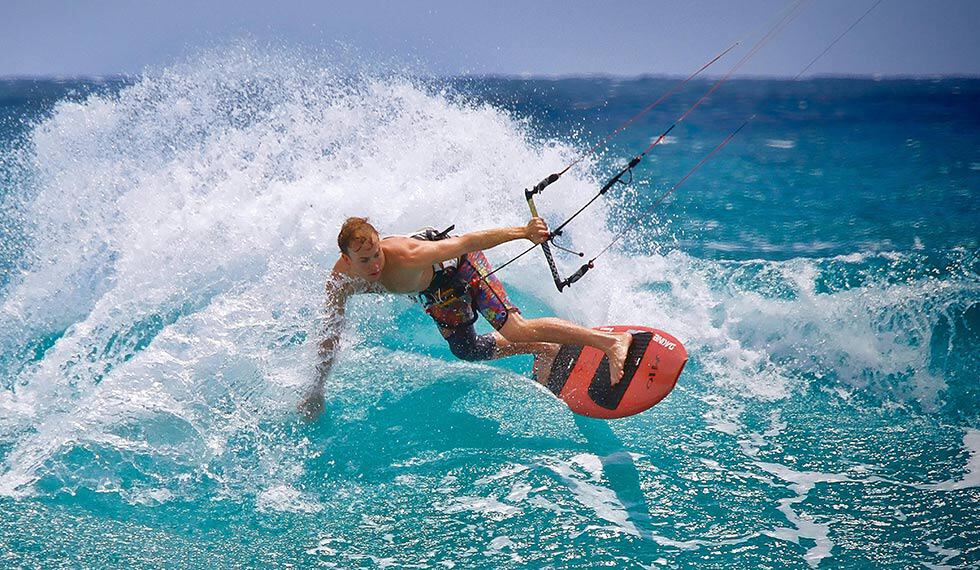
For those new to this sport, there are schools right on Kite Beach where you can learn how to kiteboard. They rent out gear too. Trained instructors will show you how to manage your kite and make your way through the water safely. And if you’ve got skills already, this beach offers big waves that let seasoned kite surfers strut their stuff.
Unlike some other water activities that need specific weather conditions to be enjoyable, kits
Discover the Hidden Gems of El Choco National Park & Cabarete Caves
Step into the wild and uncover the secrets of El Choco National Park and Cabarete Caves, just a hop away from Cabarete. This slice of heaven is your ticket to exploring breathtaking caves surrounded by vibrant forests.
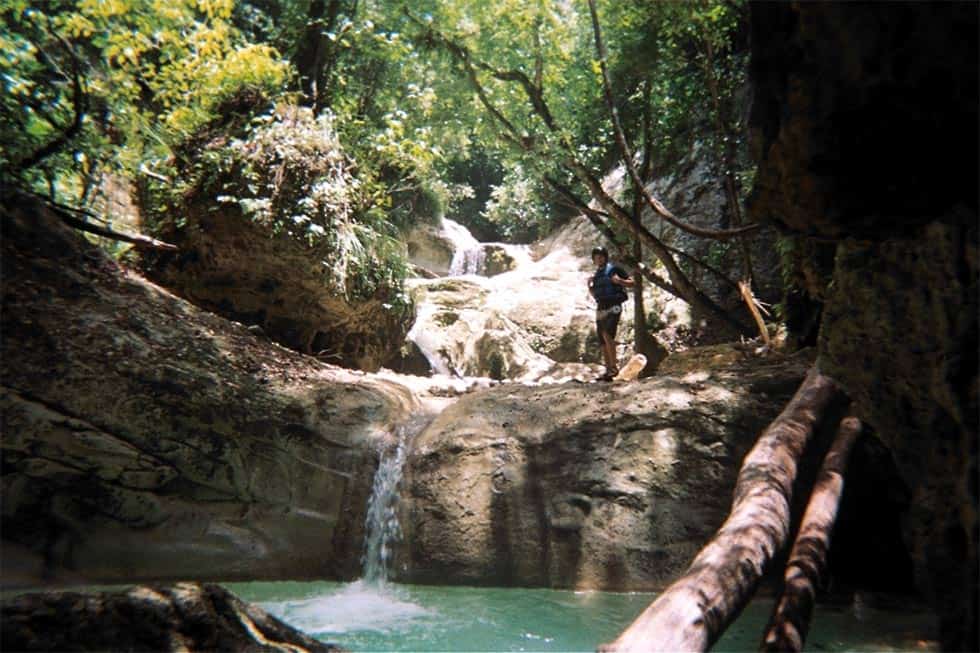
With its rich variety of plants and animals, El Choco National Park is a haven for those who love nature. By taking a guided tour, you’ll get to see stunning waterfalls, flowing rivers, and scenic hiking paths up close. You’ll also learn about how everything in this protected area connects together and why it’s so important to keep it safe.
Among the treasures here are the Cabaret Caves – an amazing network of caves filled with underground rivers waiting for you to explore them. With someone knowledgeable leading the way, you’ll find out all about how these incredible stalactites and stalagmites came into being over millennia.
To really capture what makes El Choco National Park and Cabarete Caves special though? A guided tour comes highly recommended! So tie up those hiking boots tight; don’t forget your camera because there’s nothing like diving headfirst into nature’s wonders at this hidden gem.
Take a Scenic Horseback Ride Along the Beach
Take a horseback ride along Cabarete’s beautiful coastline and see the town from a different angle. It’s an amazing way to get close to nature and enjoy the peaceful surroundings.

For both seasoned riders and those new to it, going on horseback is an excellent method for discovering the beach while taking in its incredible views. Imagine feeling the cool breeze against your skin, hearing waves crash nearby, and looking around at wide-open views as you trot down the sandy shore.
In Cabarete, there are plenty of places that organize guided horseback tours along this picturesque stretch. With experienced guides leading you through stunning scenery, they’ll point out important spots and tell stories about what makes this area special.
You don’t need any experience with riding horses since these animals are calm and easy for anyone to ride. Just hop on, hold onto your reins tightly, and start an unforgettable journey across Cabarete’s breathtaking beaches by horseback.
Enjoy a Day Trip to Paradise at Cayo Arena
Escape to a slice of heaven with a day trip to Cayo Arena, an enchanting coral island not far from the shores of Cabarete. This secluded spot is pure magic, boasting clear blue waters, untouched white sands, and lively underwater life.

With a boat ride from Cabarete taking you straight to Cayo Arena, get ready for your jaw to drop at the sheer beauty that awaits. Dive into those crystal-clear depths and marvel at the colorful coral reefs teeming with tropical fish and sea creatures. Feel free on the powdery beach as you bask in sunshine or wade through gentle turquoise waves.
As a protected marine park, Cayo Arena stands guard over its breathtaking landscapes and aquatic wonders. To keep it pristine, visitors must play by certain rules like steering clear of harming corals or leaving trash behind.
A getaway to Cayay Arena promises more than just relaxation; it’s about immersing yourself in nature’s embrace away from everyday hustle. So don’t forget your snorkeling gear and some snacks because this paradise island near Cabarete offers an unforgettable escape where adventure meets serenity.
Engage in Stand Up Paddleboarding Adventures in Cabarete Bay
Discover the charm of Cabarete Bay in a fresh way by trying out stand-up paddleboarding. This well-liked activity on the water lets you see the bay and its beautiful coastline from a new angle.

With stand-up paddleboarding, or SUP for short, you get to stand on a big board and move around using a paddle. It’s an awesome choice for people of all ages and fitness levels because it gives your whole body a workout while letting you enjoy the peacefulness of being out on the sea.
The calm waters and lovely scenery make Cabarete Bay an ideal spot for this sport. No matter if you’re just starting or have been doing it for years, there are different paths in the bay that will match how skilled you are and what kind of adventure you’re looking for.
You can glide along rivers, wander through lagoons, or even take up surfing bigger waves as part of your experience. For those who haven’t tried it before, many shops and schools right in Cabarete rent out gear and teach lessons.
Stand-up paddleboarding is more than just thrilling; it’s also about feeling connected to nature while admiring everything that makes Cabarete Bay special. So why not pick up a paddleboard? Get ready to balance yourself on top of one amazing journey across these waters.
Savor the Flavors of Local Dominican Cuisine
When you’re in Cabarete, make sure to dive into the local Dominican food. It’s a feast of fresh seafood, juicy tropical fruits, and traditional dishes that’ll have your taste buds dancing.

Start off by hitting up the seafood shacks along the beach. Here, you can enjoy everything from grilled lobster and shrimp to ceviche and fish tacos. The freshness and flavors are unbeatable for anyone who loves seafood.
For those wanting to try some classic Dominican meals, there are plenty of restaurants and cafes around serving dishes packed with locally sourced ingredients. Give mangu a go if you’re after a hearty breakfast—it’s made from mashed plantains. Or sink your teeth into sancocho, a rich stew filled with meats and root veggies.
With mangoes, pineapples, papayas aplenty in this area; don’t miss out on trying these tropical delights either! You’ll find fruit stands or juice bars all over Cabarete offering these sweet treats as refreshing snacks or drinks.
So whether food is your passion or you just want to sample what Cabarete has on offer; its culinary scene promises an adventure for your palate that will keep calling you back for more.
Immerse Yourself in the Vibrant Cabarete Nightlife
As the sun goes down in Cabarete, this beach town really starts to buzz with life. There’s a whole mix of fun waiting for you that doesn’t stop until it’s almost morning again. You’ve got everything from bars right on the beach to nightclubs and places where live music fills the air.
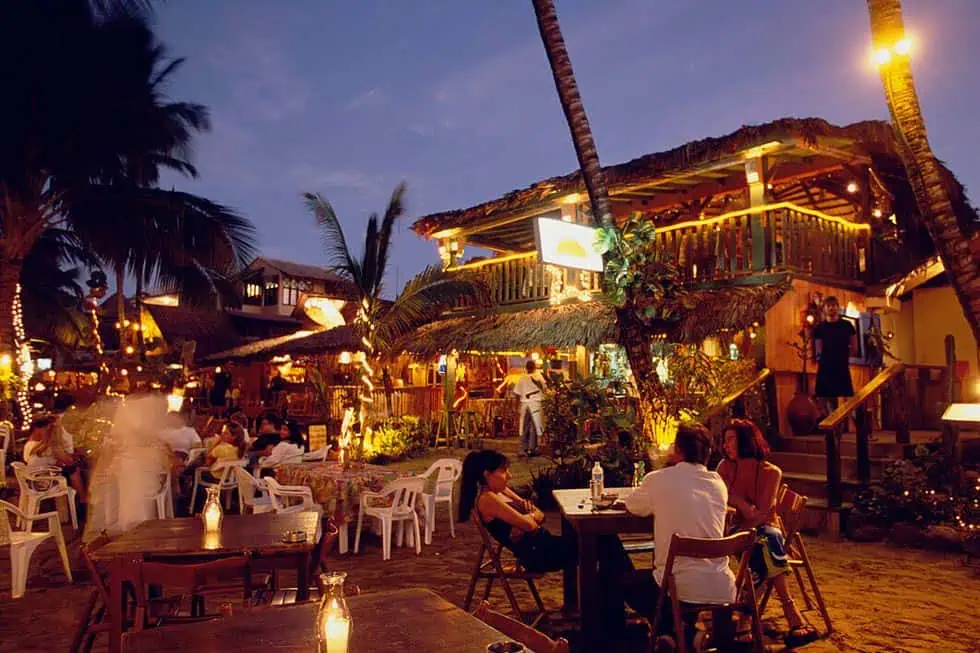
With your evening kicking off at one of those bars by the sea, imagine chilling with a cool drink while your feet are buried in sand. You could be listening to some great live tunes, watching fire dancers put on an amazing show or just enjoying how lively everything feels around you.
For anyone who loves moving their feet, Cabaret’s clubs are where it’s at. They play all kinds of music there – from Latin vibes that get everyone swaying to hits from around the world that keep you jumping all night long. These spots often have special nights too, like theme parties or evenings when DJs come and spin some tracks just for you guys.
No matter what kind of evening vibe you’re after – whether it’s something chill or a full-on party mode – Cabarete has got something for everyone. So grab those dancing shoes and let yourself get carried away by Cabarete’s energetic nightlife scene.
Exploring the Beauty and Culture of Cabarete
Cabarete is much more than just exciting adventures and a lively nightlife. In this vibrant town, you can dive into its beauty and rich culture in many ways. By walking around the colorful streets and markets of downtown Cabarete, or checking out local art galleries and shops, there’s no shortage of cultural experiences to be had. With a visit to La Boca Art Village or by simply enjoying a relaxed walk through the bustling town, you’ll get to soak in its one-of-a-kind vibe.
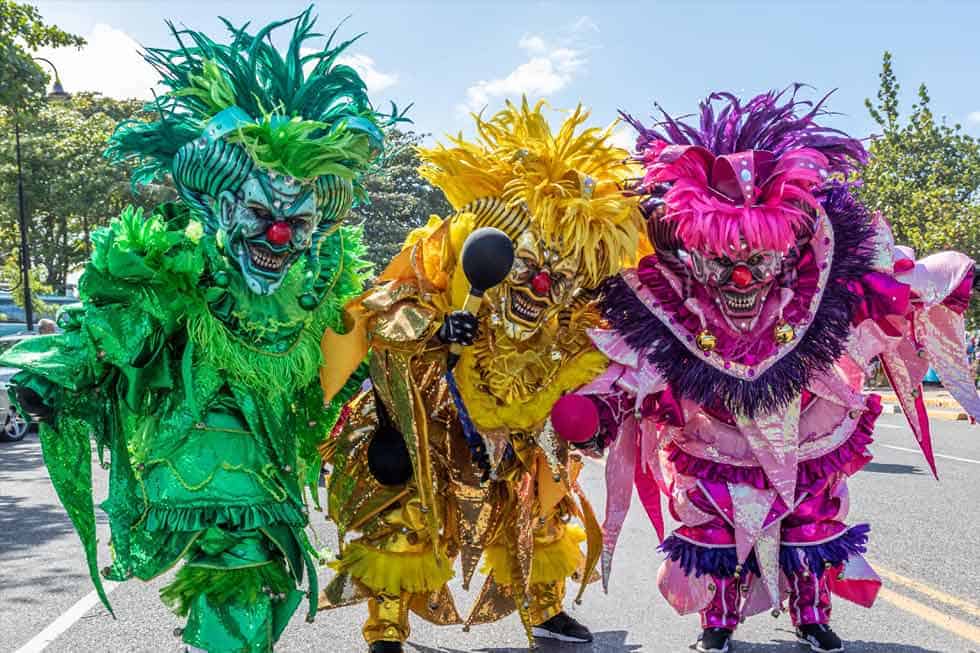
Wander Through the Colorful Streets and Markets
Exploring downtown Cabarete is a must-do for anyone visiting. With its lively streets and markets, it’s where you really get to see what the local culture is all about. From small shops and boutiques to art galleries and street vendors, there’s so much color everywhere you look.
As you walk along the beachfront promenade, take some time to check out what the beach vendors have on offer. They’ve got everything from handmade crafts to jewelry and unique souvenirs that tell a story of their own. Dive into the narrow lanes lined with brightly painted buildings; these places are perfect for finding fresh fruits, veggies, and tasting local food that’ll leave your taste buds wanting more.

In downtown Cabarete, street art is big too! Murals and graffiti bring life to building walls here – just walking around gives you an up-close view of this creative side of town.
Soaking in this vibrant atmosphere lets you connect with welcoming locals while uncovering hidden spots throughout downtown Cabarete’s colorful streets and markets.
Visit the Historical San Felipe Fort in Puerto Plata
When you’re in Cabarete, make sure to take a trip over to Puerto Plata. It’s really worth it. Over there, one of the coolest spots is the San Felipe Fort. This place isn’t just old; it dates way back to the 16th century and was super important for keeping pirates away from Puerto Plata during older times.

Now, when you visit this fort, not only do you get an amazing view of both the city and Atlantic Ocean but there’s also a museum inside that tells all about how significant Puerto Plata has been for Dominican Republic throughout history. Checking out San Felipe Fort gives you a peek into what things were like back then and teaches lots about this area’s past.
Learn to Dance Merengue and Bachata Like a Local
When you’re in the Dominican Republic, you really should dive into its music and dance scene. Cabarete is a great spot for this. Here, you can get to know Merengue and Bachata – two dances that are big deals here. Merengue isn’t just any dance; it’s the national dance of the Dominican Republic! It’s all about lively beats and moving your hips a lot. Then there’s Bachata, which is more on the sensual side and has fans all over now.
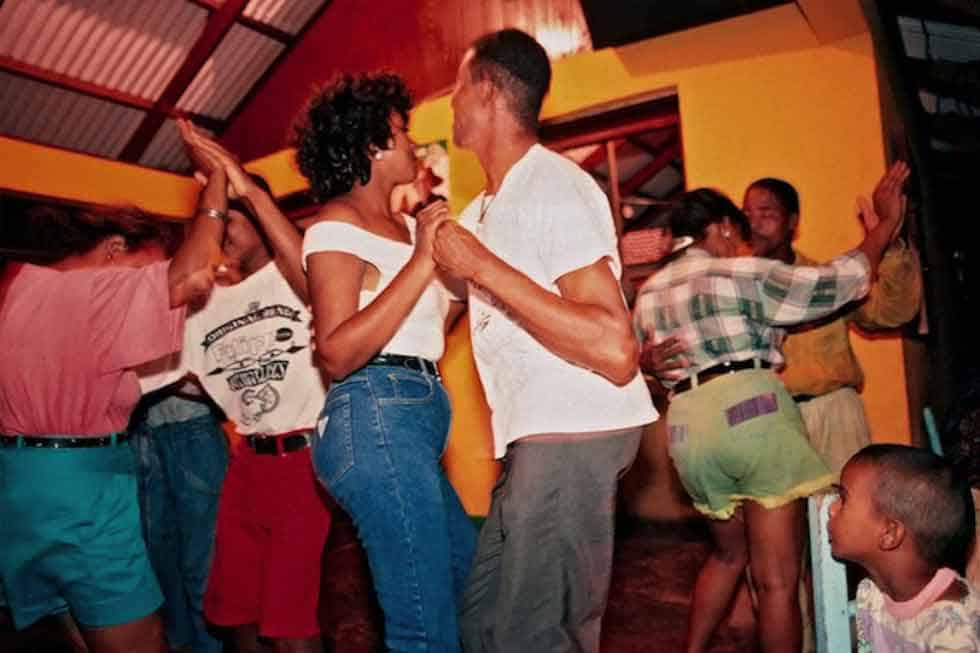
In Cabarete, lots of places teach these dances to visitors. So, if you want to pick up some basic moves or understand what makes these dances special, taking lessons is an awesome way to do it. Plus dancing like this not only lets you have fun but also helps connect with locals in Cabaret deeply.
Outdoor Adventures Beyond the Beach
Cabarete is more than just its beaches and water sports. For those looking for excitement, the area is packed with outdoor adventures. With everything from whitewater rafting trips to canyoning through the Dominican jungle on offer, there’s plenty to keep everyone entertained. These activities not only pump up your adrenaline but also let you take in Cabarete’s stunning natural scenery. No matter if you’re starting out or have lots of experience under your belt, Cabarete has something exciting for you.
Embark on a Whitewater Rafting Excursion
If you’re someone who loves a bit of thrill, then whitewater rafting in Cabarete is something you shouldn’t miss. The Yasica River, not far from here, has some really exciting rapids and beautiful views that make it the ideal spot for this adventure. There are guided tours available which cater to both beginners and those who have done rafting before. This ensures everyone gets to have a fun yet safe time out on the water. As you tackle the rapids, you’ll find yourself surrounded by greenery and stunning landscapes – it’s an experience that will stick with you forever. Whitewater rafting here isn’t just about getting your adrenaline fix; it’s also a great way to get up close with nature and feel the rush of mastering the river’s flow.
Challenge Yourself with Canyoning in the Dominican Jungle
If you’re looking for an adventure that’s out of this world, consider canyoning in the Dominican Republic’s jungle. This activity is all about moving through beautiful canyons and waterfalls by hiking, climbing, and rappelling down rocks.

With its stunning scenery, the Dominican offers an ideal setting for such a thrilling experience. There are guided tours available which cater to both beginners and those who have done it before, making sure everyone has a safe yet unforgettable time. As you journey through dense greenery and tackle various natural challenges along the way, incredible views will greet you at every turn. Canyoning here isn’t just fun; it lets you dive deep into nature’s wonders – truly a unique way to explore what the Dominican jungles have to offer.
Cabarete’s Hidden Treasures
Cabarete, beyond its well-known tourist spots, is filled with hidden gems that really show you what the Dominican Republic is all about. These places give visitors a chance to see the authentic side of Cabarete and offer unique experiences. With secluded beaches such as Playa Preciosa and local cigar factories where you can dive into learning how cigars are made, these treasures let you immerse yourself in the local culture and uncover some of Cabarete’s best-kept secrets.
Relax at the Secluded Playa Preciosa
Get away from the busy spots and find peace at Playa Preciosa, a quiet beach close to Cabarete. With its surrounding greenery and clear waters, this secret spot is ideal for some calm downtime. Whether you’re looking to bask in the sunshine, take a dip in the ocean or just enjoy the quiet of nature, Playa Preciosa is your go-to place. Bring along a picnic and spend your day discovering this private haven away from all the noise of touristy places. It’s truly a hidden jewel that lets you see Cabarete’s natural beauty up close.
Discover the Art of Dominican Cigars at a Local Factory
Dive into the world of Dominican cigars by checking out a cigar factory in Cabarete. Known all over for their top-notch quality and how they’re made, these Dominican Republic treasures offer you a peek at the skilled work that goes into making each one. At the factory, experts will fill you in on how they grow, pick, and roll these cigars. You’ll even get to buy some to remember your trip by. Visiting this place is more than just learning about cigars; it’s getting up close with what makes them so special here in the Dominican Republic and seeing firsthand the hard work of its people.
Sustainable Travel in Cabarete
Cabarete really cares about keeping travel good for the planet and helps visitors do their part too. By choosing to shop at places that are kind to the earth or joining in on cleaning up the beach, you can leave a positive mark during your stay. When you support shops around here, it’s great for Cabarete’s economy and encourages everyone to think more about our environment. Helping out with a beach clean-up is a hands-on way to look after our world and make sure Cabarete stays beautiful for people who come after us. Traveling sustainably here isn’t just fulfilling; it also plays a big role in making tourism better and more mindful overall.
Shop at Eco-Friendly Local Businesses
When you’re in Cabarete, it’s a great idea to back local businesses that care about the environment. You’ll find plenty of places selling things made right there, like crafts and clothes, or serving up organic food. Shopping at these spots helps out the local economy and does good for our planet too. Keep an eye out for places that get their power from renewable sources, try to cut down on waste, and choose materials that are kinder to the earth. By choosing eco-friendly shops and restaurants in Cabarete, you’re doing your bit to help keep the place beautiful and sustainable.
Conclusion
Wrapping things up, Cabarete in 2024 is the place to be for those who love a mix of heart-pounding adventures and chilling out. With activities ranging from chasing waterfalls and catching waves on a surfboard to tasting local dishes and dancing the night away, everyone can find their slice of happiness here. By diving into what makes Cabarete special, you’ll not only enjoy its stunning spots but also contribute positively by traveling responsibly. This spot in the Dominican Republic welcomes both adrenaline junkies and culture lovers with open arms, offering an experience that’s hard to forget. So why wait? Start planning your visit to this beautiful destination where unforgettable memories await among breathtaking views and friendly faces.
Frequently Asked Questions
What’s the Best Time of Year to Visit Cabarete?
If you’re thinking about the best time to head over to Cabarete, consider going between December and April. During these months, the weather is just right – it’s warm but not too hot, and you hardly see any rain. This makes it an ideal period for all sorts of fun outside activities or just chilling on Cabarete’s stunning beaches.
Are There Activities for Non-Surfers in Cabarete?
In Cabarete, even if you’re not into surfing, there’s a bunch of cool stuff to do. For starters, you can check out the old San Felipe Fort in Puerto Plata for a bit of history. If you’re up for some fun on the water but don’t want to surf, kayaking and paddleboarding in the lagoon are great picks. Besides that, chilling on the beach is always an option or maybe treating yourself to some spa time. And if art’s your thing, diving into the local scene could be pretty interesting too.

How Can Travelers Support Local Communities in Cabarete?
When visiting Cabarete, travellers have a great chance to help out the local community. By choosing to shop at businesses that care about the environment, joining in on days when everyone helps clean up the beach, and sticking to ways of travelling that don’t harm nature, visitors can make a difference. It’s all about boosting the local economy while also taking steps to protect our surroundings. This way, anyone coming through can leave behind a positive mark on both the people and places of Cabarete.
Can Beginners Learn to Kitesurf in Cabarete?
Absolutely, beginners have the chance to dive into kitesurfing in Cabarete. This place is celebrated as the global hub for water sports and it welcomes individuals with any level of experience. With a variety of kitesurfing schools around, there are plenty of seasoned instructors ready to help newbies get started on this exciting adventure on the water.
What Are the Must-Try Foods in Cabarete?
In Cabarete, a place that’s like heaven for anyone who loves food, there are some dishes you just can’t miss out on. For starters, Wilson’s La Boca Restaurant serves up some amazing fresh seafood. Then, at Yalla, the arepas are something to talk about. And if you’re into fish tacos, Gordito’s is where it’s at. On top of these treats, Papi’s restaurant offers tasty local Caribbean dishes that’ll give your taste buds a trip they won’t forget. And for dessert? A stop by Helados Bon for ice cream is a must-do while in town.
How Safe Is Cabarete for Tourists?
Cabarete is mostly a safe place for visitors. But, it’s always good to be careful and keep an eye on what’s happening around you. For your safety, try not to walk by yourself at night in places where there aren’t many people and stick to transportation services that are known for being reliable. Also, make sure your valuable stuff is kept in a secure spot and watch out for your things carefully.
What Are the Best Souvenirs to Bring Back from Cabarete?
When you go to Cabarete, there’s a bunch of cool stuff you can take back with you. You’ve got things like jewellery made by hand, art from the area, Dominican cigars, and rum that’s made locally. With all the lively places to shop in Cabarete, like markets full of crafts and shops that sell special items, finding these souvenirs is part of the fun.
Tips for First-Time Visitors to Cabarete: What Not to Miss
If you’re visiting Cabarete for the first time, there’s a bunch of cool stuff you really should check out. For starters, head over to Playa Encuentro and catch some waves with a surf lesson. Then, swing by Wilson’s La Boca Restaurant to get a taste of the local food scene. Don’t miss out on Monkey Jungle where you can soar through the trees on a zip line tour. While in Cabarete, make sure to dive into its lively shopping spots too. It’s also worth taking some time to just soak up all the stunning views around you, enjoy hanging out at night when things get pretty active and think about giving back by looking into ways to volunteer within the community.
What are the best beaches to visit in Cabarete?
The top beaches to visit in Cabarete are Cabarete Beach, Kite Beach, and Playa Encuentro. Each offers unique experiences like sunbathing, swimming, and surfing.
What kind of shops can I find in downtown Cabarete?
Downtown Cabarete has a variety of boutique shops selling clothes, artisan crafts, jewellery, and souvenirs. You can also find fresh coconut stands.
What is the nightlife like in Cabarete?
Cabarete has a lively nightlife with live music venues, beachfront bars, and dancing spots. Popular places include La Chabola, Mojito Bar, and Voy Voy.
What water sports can I try in Cabarete?
In Cabarete, you can try kitesurfing, windsurfing, stand-up paddleboarding. wingfoiling and sailing The conditions are perfect for these activities.
Are there any day trips I can take from Cabarete?
Yes, you can visit El Choco National Park, Laguna Dudu, and Cayo Arena for exciting day trips from Cabarete.
How can I get around Cabarete?
You can walk around town, hire a private taxi, or rent a bike. Cabarete is a walkable town, especially in the downtown area.
What kind of food can I find in Cabarete?
Cabarete offers a variety of food options, including seafood, international cuisines, and vegan and healthy choices.

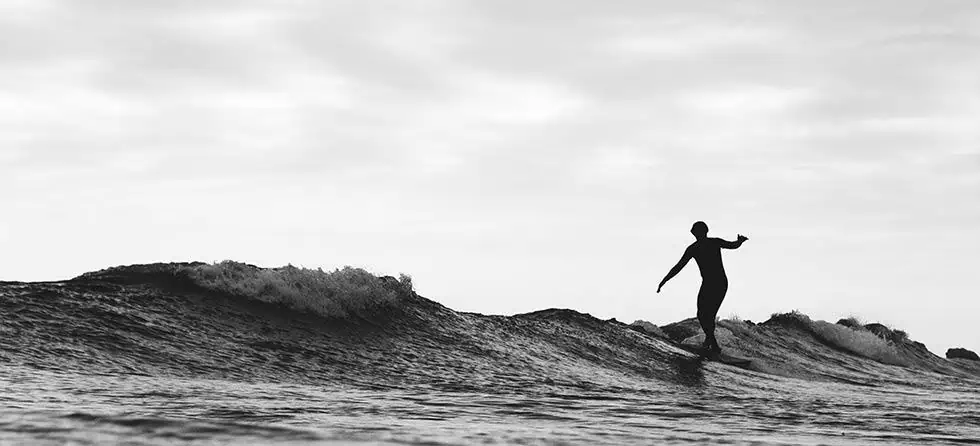










 The Kitesurfing spots in the Cabarete area: (from East to West)
The Kitesurfing spots in the Cabarete area: (from East to West) we are going to be biased here ( look at the URL in your browser), even though we are called Swell Surf Camp, we get loads of kitesurfers (or people
we are going to be biased here ( look at the URL in your browser), even though we are called Swell Surf Camp, we get loads of kitesurfers (or people  There are at least a dozen or more kite surf schools in Cabarete, some are well established and very good, and some are, well not so. There are price differences too; but do keep in mind that kitesurfing is not a cheap sport, the lessons are not cheap and neither is the equipment. Swell deals with Laurel Eastman Kiteboarding school (LEK), located at Cabarete beach, and with KiteClub at Cabarete Kitebeach. Both are very well-known and 2 of the most established, professionally run schools in Cabarete, neither of them are the cheapest kite schools, but what you will get with them is:
There are at least a dozen or more kite surf schools in Cabarete, some are well established and very good, and some are, well not so. There are price differences too; but do keep in mind that kitesurfing is not a cheap sport, the lessons are not cheap and neither is the equipment. Swell deals with Laurel Eastman Kiteboarding school (LEK), located at Cabarete beach, and with KiteClub at Cabarete Kitebeach. Both are very well-known and 2 of the most established, professionally run schools in Cabarete, neither of them are the cheapest kite schools, but what you will get with them is:
































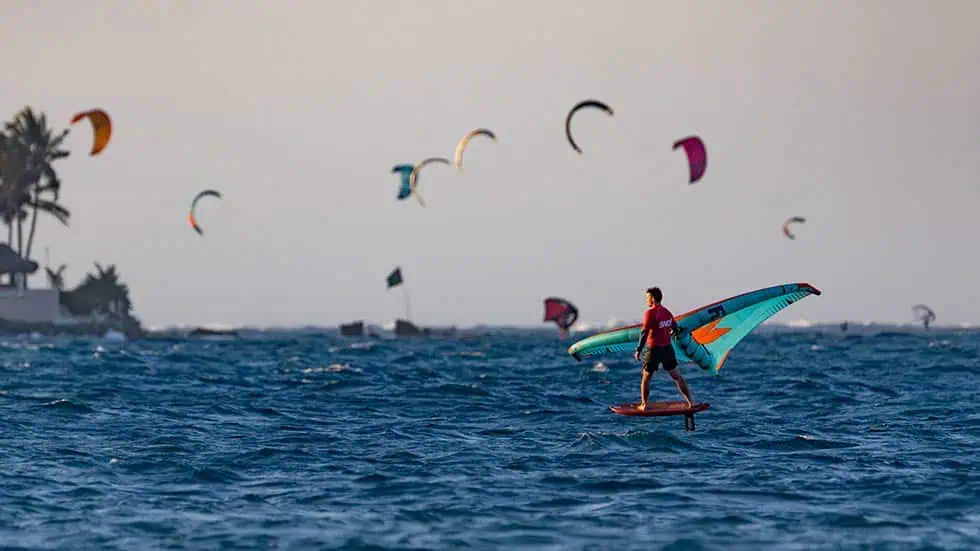
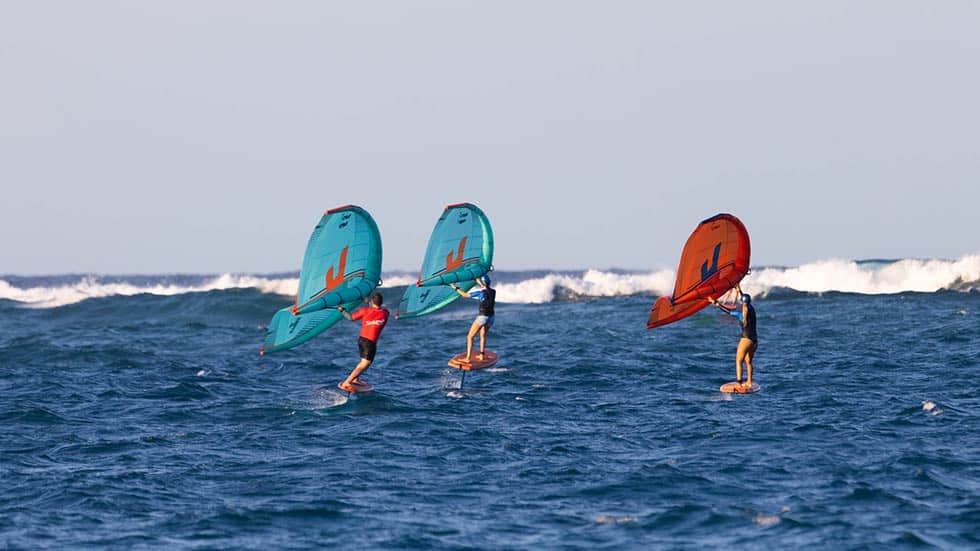
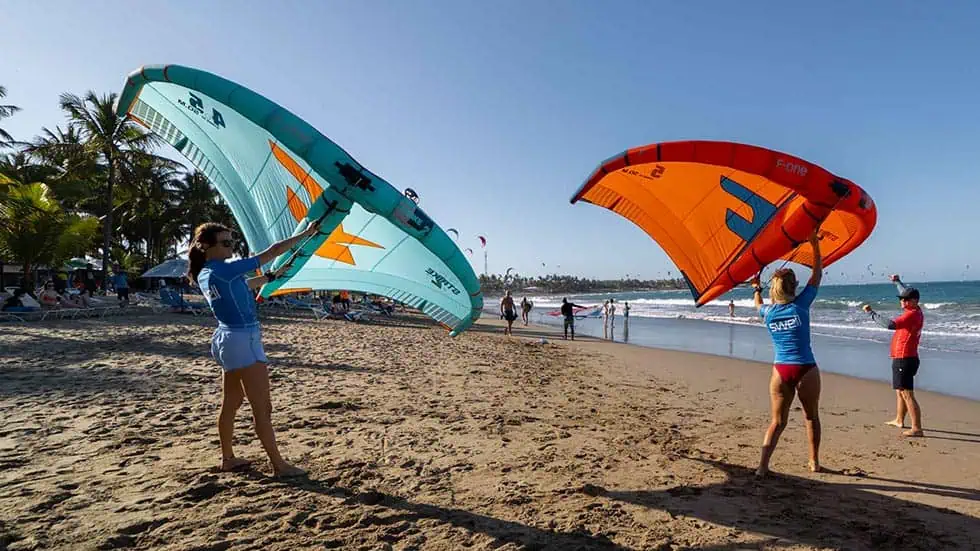
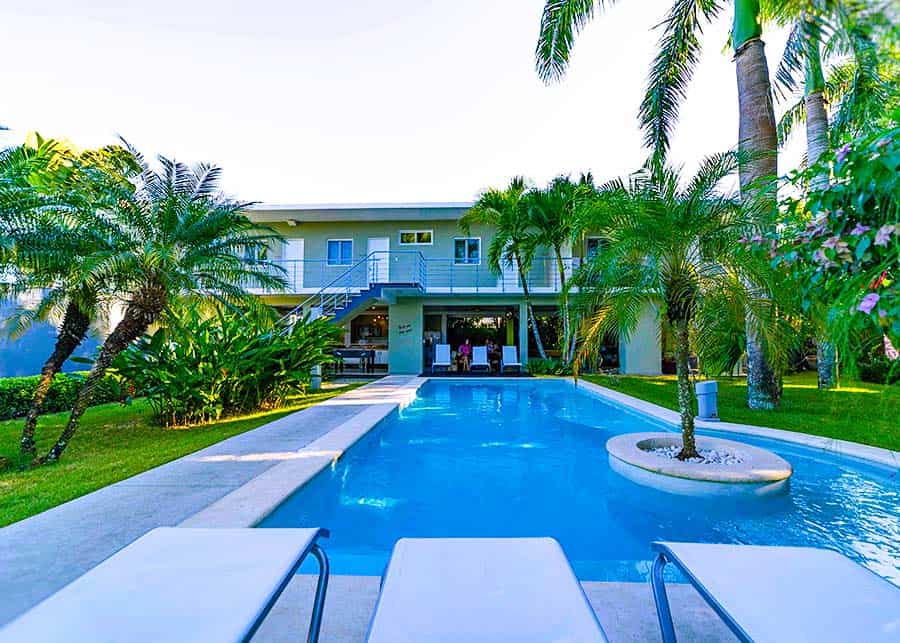
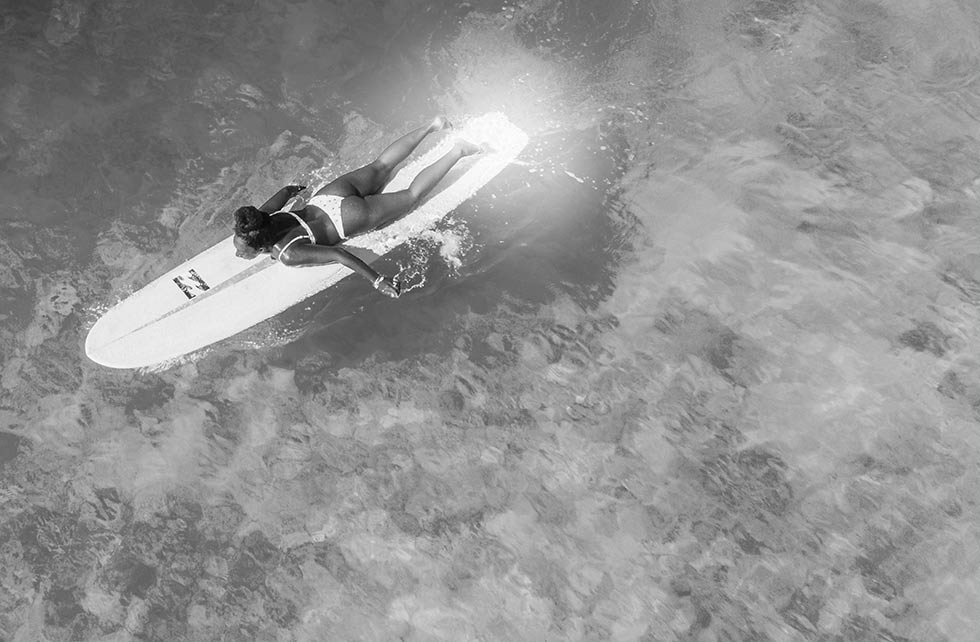
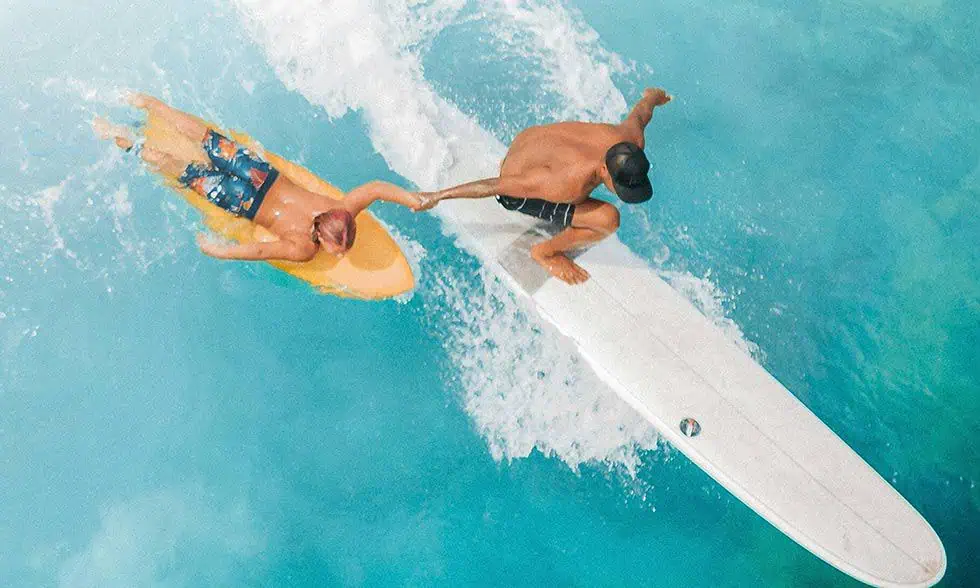



 Swell has set whole new standards in accommodation and guest experience of surf camps.
Swell has set whole new standards in accommodation and guest experience of surf camps.







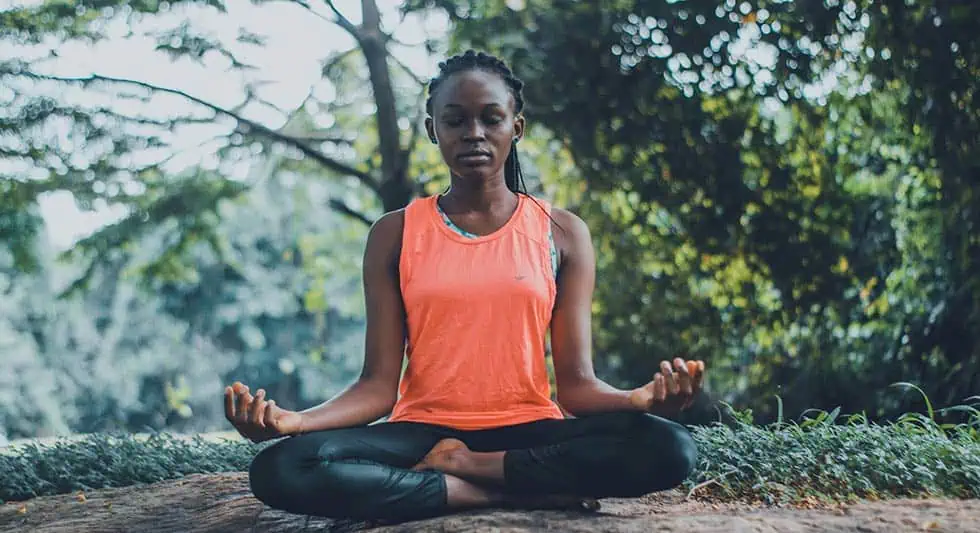
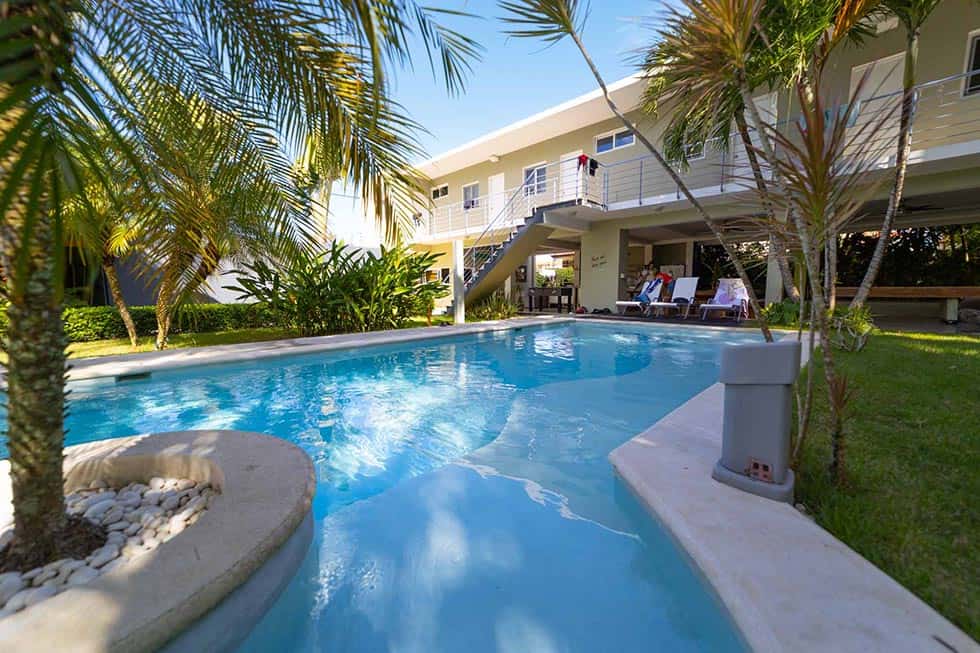







 Surf leggings will protect you from rashes that the rough surface beginner surfboards have for grip. They will also protect your legs from being burned by the sun. I wear ones from Speedo, but they are also available from many other brands.
Surf leggings will protect you from rashes that the rough surface beginner surfboards have for grip. They will also protect your legs from being burned by the sun. I wear ones from Speedo, but they are also available from many other brands.


























